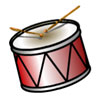Skip over navigation
Have a look at the sets of four quantities below.
Can you rank them in order from smallest to largest? To help you decide, you may need to find extra information or carry out some experiments.
Can you convince us that your order is right?

Or search by topic
Number and algebra
Geometry and measure
Probability and statistics
Working mathematically
Advanced mathematics
For younger learners
In Order
Age 7 to 11
Challenge Level 





Have a look at the sets of four quantities below.
Can you rank them in order from smallest to largest? To help you decide, you may need to find extra information or carry out some experiments.
Can you convince us that your order is right?
 |
Temperature
Of a kettle of boiling water
Of the centre of the sun
On a thermometer when you are quite well
Of the water in a school pond
|
 |
Speed
Of a rocket going up on bonfire night
Of a train
Of a ladybird walking along a leaf
Of a ball being thrown to your friend
|
 |
Time
Taken for a puddle of water to evaporate on a hot day
Taken for frogspawn to grow into a frog
Taken to walk across the playground
Taken for the moon to orbit the earth
|
 |
Sound
Of a clap of thunder
Of a teacher blowing a whistle
Of a tap running
Of a recorder being played by a friend
|
You may also like
What Is the Time?
Can you put these times on the clocks in order? You might like to arrange them in a circle.

